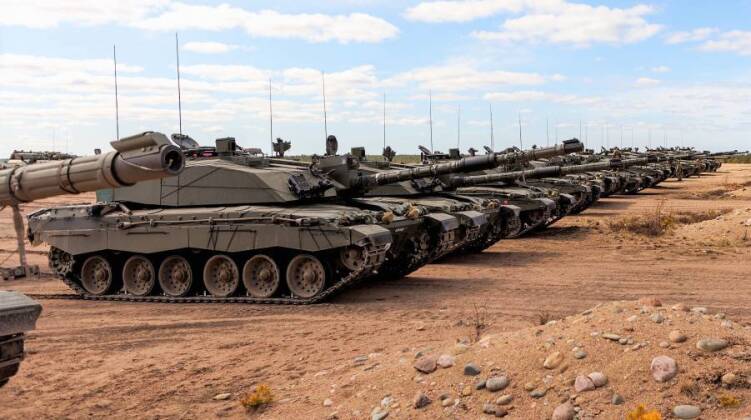News
31st NATO Member Doubles Bloc’s Border With Russia: What Finland’s Accession Means For Russian Security

On April 4 NATO diplomats handed over documents pertaining to Finland’s accession to the bloc to the United States, with Secretary of State Antony Blinken announcing that “with receipt of this document of accession, we can now declare that Finland is the 31st member of the North Atlantic treaty.” NATO Secretary General Jens Stoltenberg added at the end of the ceremony that “we welcome Finland to the alliance.” After rapid expansion of NATO into Eastern Europe in the three decades following the end of the Cold War, Finland remained among a small minority of countries on the European continent outside the military bloc. Of all the new countries to have joined NATO since 1989, however, Finland’s accession may well be the most significant due to its historic ties to Russia and its strategic location, with the country’s 1,340km border with Russia doubling the length of NATO’s border with Russia. The border runs mainly through the uninhabited taiga forests and through sparsely populated rural areas. The lack of natural features such as mountains or rivers separating the two countries could make it particularly difficult to defend for either side.
While Sweden which is also seeking to join NATO has long closely integrated its armed forces with those of the Western Bloc, Finland was closer to total neutrality during the Cold War and large operated Soviet hardware such as MiG-21 fighters. This changed after the USSR’s disintegration, with the MiGs replaced by American F-18 fourth generation fighters and its Soviet T-55M tanks replaced by the German built Leopard 2A4 and Leopard 2A6 vehicles. The country still operates a range of Soviet armaments including BMP-2 infantry fighting vehicles and MT-LB armoured personnel carriers. Before its accession to NATO Finland had already moved towards expanding its armed forces’ integration with those of alliance members, culminating in 2021 in a major order for 64 F-35A fifth generation stealth fighters which are expected to place significant further pressure on Russian air defences complementing major F-35 deployment across the Arctic, Eastern Europe, and Northeast Asia by the United States and its allies. F-35s around the world are integrated into a single data sharing network, and pose a particular challenge to Russian air defences due to their advanced electronic warfare and radar evading capabilities. Russia itself lacks a comparable fighter class, with only the Chinese J-20 considered to compete in the same league in terms of the sophistication of its stealth capabilities and avionics. The F-35 is still very far from ready for high intensity combat, and with a troublesome engine and close to 800 performance bugs, but it could by the end of the decade be a game changer for Western offensive capabilities against Russia should these issues be resolved.

Beyond F-35 acquisitions, deployments of contingents from NATO members to Finnish territory have continued to grow over the years, a notable example being major deployments of British Army Challenger 2 tanks to the country in May 2022 for exercises. Finnish forces have also frequently participated in NATO exercises abroad under a partner status. The move to join NATO nevertheless represents a significant development, and one which could pave the way for much larger and more permanent deployments of forces from other Western allies to Finnish territory. With the United States also expanding nuclear sharing agreements with NATO members which entails deploying nuclear weapons to their territories, further nuclear sharing agreements in Eastern Europe are expected to materialise over the next decade – potentially with Poland later in the decade with Finland potentially following in the 2030s depending on the state of NATO-Russian relations at the time. The deployment of F-35s, an optimal nuclear delivery asset, and the country’s NATO membership, are key to potentially paving the way towards this, with F-35s based in Finland potentially able to strike very deep into Russia particularly as the fighter’s endurance and electronic warfare capabilities are expected to have improved very significantly by then.
Geopolitically the Finnish presidency summarised the shift in the country’s position as follows: “Finland has today become a member of the defence alliance NATO. The era of military non-alignment in our history has come to an end. A new era begins.” It added that “each country maximises its own security. So does Finland. At the same time, NATO membership strengthens our international position and room for manoeuvre. As a partner, we have long actively participated in NATO activities. In the future, Finland will make a contribution to NATO’s collective deterrence and defence.” Although Russian officials have stated that the country will respond to Finland’s NATO accession with deployments of more assets to the region, the Russian defence budget is already high as a portion of GDP, and was already dwarfed by that of NATO, meaning the balance of power in the region is still expected to be less favourable to Russian interests. The lack of assets such as stealth fighters, or of comparably large ground forces to those NATO collectively fields means Russia will likely rely heavily on asymmetric assets such as mobile air defence and missile systems deployed to the area to meet the new perceived challenge to its security. Finland’s armed forces have long been among the most capable in NATO, with its artillery assets, large manpower, winter fighting capabilities and high combat readiness being particularly outstanding, which will make it a particularly welcome addition to the Western alliance at a time of heightened tensions with Russia.












